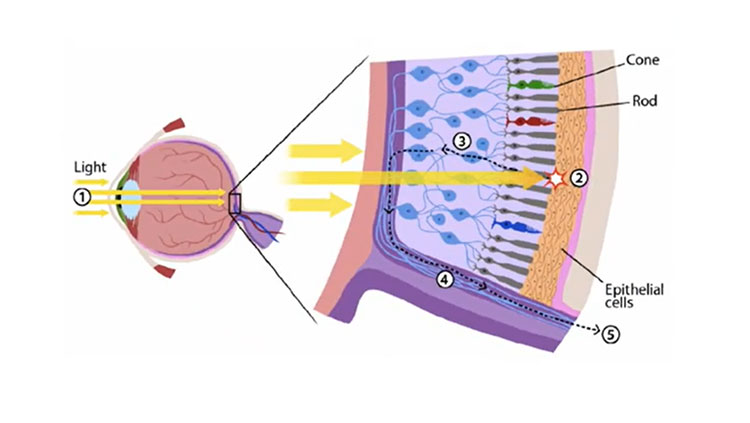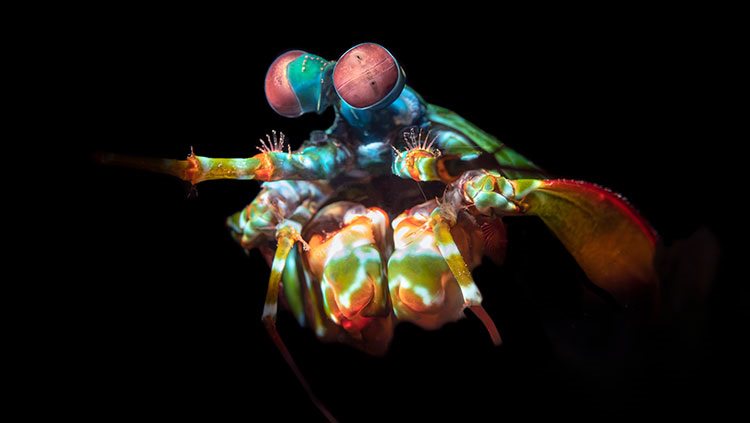Color: The World Your Brain Creates
- Published10 Nov 2025
- Source BrainFacts/SfN
Colors aren’t a fixed property of the external world. Instead, they are the result of how our brains interpret the visible light spectrum.
When light enters our eyes, it’s processed by three types of cone cells within the retina. From there, this information is transferred to the brain, which interprets different wavelengths of light as the colors we see every day. People with color blindness have missing or faulty cones, meaning their brains take in different information compared to those who have all three sets of fully functional cones, causing them to see a more limited range of color.
This is a video from the 2025 Brain Awareness Video Contest.
Created by Jane Karaca and Victoria Thomas
CONTENT PROVIDED BY
BrainFacts/SfN
Transcript
That apple looks red, right? But what if I told you that apple has no color? Let's reverse back.
Everything you haven't thought of has no color — the galaxy, Earth, and the trees outside your window right now. It's your brain's generated illusion. In other words, color is a lie.
A perfect example to understand a picture of this is: let's say we have a prism, and light from the sun hits the prism, creating a beautiful rainbow. You might ask why.
This is because the light isn't just made from one wavelength but many electromagnetic radiation waves that span from red to violet. So when that light hits the prism, it refracts as the light moves through a denser medium (glass) from a less dense medium (air).
However, wavelengths don't have color. Rather, they are just different levels of energy. It is your brain that interprets them.
So, let's say you stumble across a beautiful green leaf in your garden. In your eyes, it's simply green. But that's all a part of your brain's illusion. You see, objects don't have a fixed color then — not as a property. The leaf is just absorbing wavelengths and reflecting them back in your eye so you can perceive the leaf as green.
In your eye's retina — which is part of your central nervous system — there are two photoreceptors that measure light. Rods are used in low-light conditions. However, these are only one type of rod cell. And they don't detect color. Rather, it is the cones that are the ones that help us see color in high-light conditions.
Cones are specialized cells, and since there are only three types of cells that are specialized for red, green, and blue. S cones have a sensitivity around 420nm, which is blue light. M cones at around 530nm, which is green light. And L cones at around 560nm, which is red light.
When that light from the leaf is reflected into your eye, it triggers photon absorption in your retina and cone cells. But cones aren't the sole contender of this process. They are the ones that respond to the wavelengths. The brain is the main component that decodes these signals into colors you experience every day.
Signals travel through the optic nerve to your brain's lateral geniculate nucleus and the thalamus. The thalamus organizes all the information it receives before sending it to your visual cortex in the occipital lobe. This visual cortex area is your brain's image processing center.
Your brain analyzes these electric signals and interprets the wavelength, measured in nanometers, to identify colors, such as recognizing a specific range of green. If you look at an object that reflects yellow light, both L and M cone receptors work at the same time and combine signals to recreate that color.
Your brain uses opponent processing to compare signals from many cones, allowing you to see a wide range of colors. Each brain's visual system interprets and perceives colors differently. This is why your cat and your dog perceive color at a more limited sense than us — because their eyes have fewer types of cone cells.
Similarly, genetic mutations cause people to have color blindness. If a cone is absent or defective in your eye, your brain receives incomplete signals.
For example, the most common color blindness is when the L cones (which is the red receptor) or M cones (which is the green receptor) don't function properly, and make it difficult for people to distinguish greens from reds.
Although colors don't exist in the way we think, every time you open your eyes, your brain creates a masterpiece of vibrance — the creation of a more colorful, vibrant world.
What to Read Next
Also In Vision
Trending
Popular articles on BrainFacts.org

















